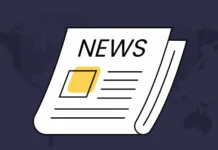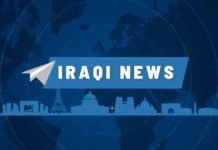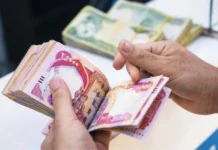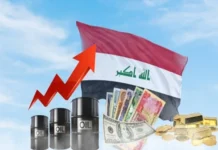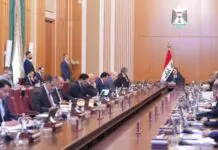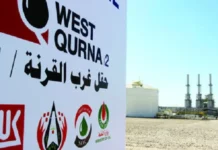Good Morning ,
Wall Street’s Power Surge: Deregulation Unlocks $2.6 Trillion in New Lending
Trump’s financial reforms aim to supercharge U.S. lending — but could they also tilt the balance of global banking power?
A Deregulation Wave — and a Strategic Shift
The Trump administration is preparing a sweeping overhaul of U.S. banking capital rules that could unlock up to $2.6 trillion in new lending capacity for Wall Street’s biggest players.
● Capital relief on the table: Loosening Common Equity Tier 1 (CET1) requirements would allow megabanks — including JPMorgan, Citigroup, and Bank of America — to expand credit lines and balance sheets.
● Policy rationale: Officials argue that freeing this capital will “restore flexibility and competitiveness,” driving U.S. lending into key strategic sectors like energy, defense, and infrastructure.
● Underlying motive: Deregulation doubles as a geopolitical move — unleashing U.S. liquidity in a moment when BRICS nations are building rival financial systems.
This is not just deregulation — it’s financial rearmament.
A Global Banking Arms Race
Across the Atlantic, regulators remain cautious, but Washington is betting on scale over restraint.
● Europe and Asia hold firm: EU and UK regulators are maintaining Basel III-era leverage ratios to protect against systemic shocks.
● The U.S. flips the script: By contrast, American policymakers view excess capital as idle potential — capital that can be weaponized for global influence.
● Strategic timing: As BRICS and Gulf states shift trade away from dollar systems, the U.S. is moving to reassert Wall Street dominance through sheer liquidity force.
This marks the return of the U.S. financial-industrial complex — not through war, but through credit expansion.
Risk and Reward — The Inflation Dilemma
Critics warn the move could reignite the very risks that led to the 2008 financial crisis.
● Systemic risk reintroduced: Reducing buffers during high-rate volatility may heighten exposure to loan defaults and asset devaluation.
● Administration counterpoint: Officials call this “controlled deregulation” — asserting that markets and AI-driven risk models now provide early warning capabilities.
● The strategic tradeoff: America appears willing to tolerate higher short-term risk for longer-term dominance in global credit creation.
In essence: risk is being reframed as leverage.
Financial Policy as Geopolitical Strategy
This isn’t just about banks — it’s about who controls the world’s credit rails.
● Reasserting dollar liquidity: Deregulation allows the U.S. to remain the primary issuer of cross-border liquidity, reinforcing dollar-based settlements even as alternatives rise.
● Parallel to sanctions policy: Washington’s leverage over SWIFT and dollar clearing remains a central geopolitical tool — deregulation strengthens that influence.
● Global context: In an era of financial fragmentation, this policy signals America’s intent to out-expand rather than out-regulate its competitors.
This is the financial counterpart to foreign policy realignment — using liquidity as soft power.
Why This Matters
We are watching a deliberate recalibration of U.S. economic strategy — one designed to secure its leadership in an emerging multi-rail world of finance.
● Deregulation may boost credit and investment, but it also reshapes the global financial hierarchy.
● It demonstrates that monetary power, not military might, is now the decisive weapon in the geopolitical contest.
● As BRICS nations test asset-backed settlements, the U.S. is countering with sheer scale, liquidity, and velocity.
This is not just politics — it’s global finance restructuring before our eyes.
@ Newshounds News™ Exclusive
Sources:
• Financial Times – Bank deregulation set to unlock $2.6tn of Wall Street lending capacity
• Reuters – U.S. financial sector eyes relaxed capital rules amid Trump reforms
• The Guardian – Global regulators warn of financial fragmentation risk
~~~~~~~~~
Qatar’s Air Force Facility in Idaho: A Strategic Alliance Hidden in Plain Sight
The U.S. quietly hosts a foreign air force training base, signaling deeper defense and geopolitical integration between Washington and Doha.
A Facility That Raised Eyebrows
- The announcement that Qatar is developing an Air Force training facility at Idaho’s Mountain Home Air Force Base sparked public curiosity — and some confusion.
- Initially portrayed as a “Qatari Air Force Facility,” officials have clarified that the site is part of a joint training and operational arrangement, not an independent Qatari base.
- The partnership builds on a longstanding defense cooperation agreement between the U.S. and Qatar, with the Gulf nation already operating American aircraft and maintaining close logistics ties.
What’s Really Being Built
- U.S. officials describe the project as an expansion of training infrastructure, designed to support joint flight operations, maintenance, and interoperability exercises.
- Construction is funded by Qatar, estimated at around $110 million, to accommodate Qatari pilots and personnel training on U.S.-made F-15 fighter jets.
- The move underscores Qatar’s deepening reliance on U.S. defense systems, as the country continues to modernize its air fleet through American technology.
Why Idaho — and Why Now
- Idaho’s Mountain Home AFB offers vast airspace and existing facilities ideal for high-level flight training — a major reason the U.S. Air Force approved the arrangement.
- The project also reflects a strategic pivot toward coalition readiness — ensuring that U.S. partners can operate seamlessly with American forces in future joint missions.
- Amid regional tensions in the Middle East, Doha’s investment signals confidence in long-term U.S. security ties, even as Qatar balances relationships with Iran and Turkey.
Geopolitical Undercurrents
- Qatar’s funding of infrastructure on U.S. soil blurs the traditional lines of host-nation support, indicating a mutual strategic dependency.
- The arrangement could serve as a template for other allied nations seeking deeper military integration with Washington without establishing overt “foreign bases.”
- It also highlights America’s growing use of allied partnerships to offset budgetary pressures while maintaining global reach.
Why This Matters
This development isn’t just about air training — it’s about embedding global alliances into U.S. territory, signaling a shift from transactional defense agreements toward interoperable military ecosystems.
Qatar’s foothold in Idaho represents the quiet globalization of U.S. defense infrastructure, blending diplomacy, finance, and strategy under one roof.
This is not just politics — it’s global finance restructuring before our eyes.
@ Newshounds News™ Exclusive
Sources:
• Newsweek – Qatar is Getting an Air Force Facility in Idaho: What to Know
• Newsweek – Qatari Air Force Facility Update: Official Clarifies Status and Plans
~~~~~~~~~
Seeds of Wisdom Team RV Currency Facts Youtube and Rumble
Newshound’s News Telegram Room Link
Follow the Gold/Silver Rate COMEX
Follow Fast Facts
Seeds of Wisdom Team™ Website
